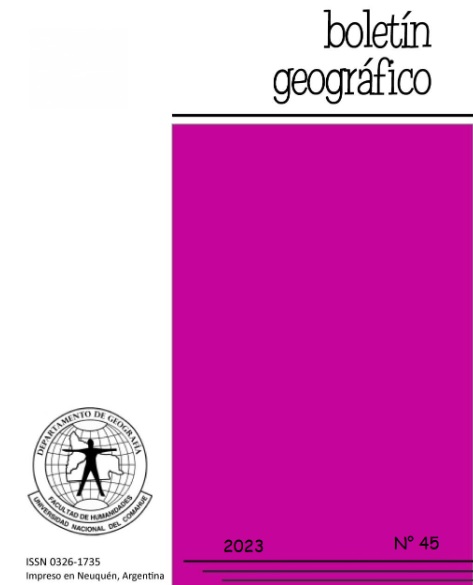Analysis of renewable energy potential in the Asia-Europe geographical axis
Keywords:
Renewable energies, Energetics politics, geographical axis, energy access, social and economical developmentAbstract
The limitation of conventional energy sources, on the one hand, and environmental concerns, on the other, have led countries increasingly to promote renewable energy technologies. Energy policy instruments play a crucial role in implementing innovation and reducing costs in renewable energy production. Countries deploy various policies to promote renewable energy technologies, such as capital subsidies, feed-in tariffs, tradable certificates, and renewable portfolio standards. However, some policies are more effective than others. Analyzing the renewable energy potential of advanced countries and combining these with indigenous factors is leading developing countries to create renewable energy technologies in their energy supply structures. This paper analyses the effect of different policy instruments in the renewable energy sectors in the Geographical Axis. Measures are analyzed and policy recommendations which, when considered, contribute to achieving renewable energy, thereby reducing emissions, mitigating climate change, and providing a clean environment and clean energy for all and future generations. It also investigated the opportunities associated with renewable energy sources, such as energy security.
Downloads
References
Abbasi, T., & Abbasi, S. (2010). Renewable energy sources: Their impact on global warming and pollution. PHI Learning.
Abbasi, T., Premalatha, M., & Abbasi, S. (2011). The return to renewables: Will it help in global warming control? Renewable and Sustainable Energy Reviews, 15, 891–894. http://dx.doi.org/10.1016/j.rser.2010.09.048
Ajanovic, A. (2011). Biofuels versus food production: Does biofuel production increase food prices? Energy, 36, 2070–2076. http://dx.doi.org/10.1016/j.energy.2010.05.019
Asumadu-Sarkodie, S., & Owusu, P. A. (2016a). A review of Ghana’s energy sector national energy statistics and policy framework. Cogent Engineering, 3. doi:10.1080/23311916.2016.1155274
Asumadu-Sarkodie, S., & Owusu, P. A. (2016b). The potential and economic viability of solar photovoltaic in Ghana. Energy Sources, Part A: Recovery, Utilization, and Environmental Effects. doi:10.1080/15567036.2015.1122682
Asumadu-Sarkodie, S., & Owusu, P. A. (2016c). Carbon dioxide emissions, GDP, energy use and population growth: A multivariate and causality analysis for Ghana, 1971–2013. Environmental Science and Pollution Research International. doi:10.1007/s11356-016-6511-x
Asumadu-Sarkodie, S., Owusu, P. A., & Jayaweera, H. M. (2015). Flood risk management in Ghana: A case study in Accra. Advances in Applied Science Research, 6, 196–201
Asumadu-Sarkodie, S., Owusu, P. A., & Rufangura, P. (2015). Impact analysis of flood in Accra, Ghana. Advances in Applied Science Research , 6 , 53–78
Baños, R., Manzano-Agugliaro, F., Montoya, F., Gil, C., Alcayde, A., & Gómez, J. (2011). Optimization methods applied to renewable and sustainable energy: A review. Renewable and Sustainable Energy Reviews, 15, 1753–1766. http://dx.doi.org/10.1016/j.rser.2010.12.008
Baum, S., Weih, M., Busch, G., Kroiher, F., & Bolte, A. (2009). The impact of short rotation coppice plantations on phylodiversity. Landbauforschung – vTI Agriculture and Forestry Research, 3, 163–170.
Brew-Hammond, A. (2010). Energy access in Africa: Challenges ahead. Energy Policy, 38, 2291–2301.10.1016/j.enpol.2009.12.016
Demirbas, M. F., Balat, M., & Balat, H. (2009). The potential contribution of biomass to sustainable energy development. Energy Conversion and Management, 50, 1746–176
Edenhofer, O., Pichs-Madruga, R., Sokona, Y., Seyboth, K., Matschoss, P., Kadner, S., von Stechow, C. (2011). Renewable Energy Sources and Climate Change Mitigation. Cambridge: Cambridge University Press. http://dx.doi.org/10.1017/CBO9781139151153
EEA. (2016). Mitigating climate change, greenhouse gas emissions. Retrieved from http://www.eea. Europa.eu/sour-2015/countries-comparison/ climate-change-mitigation
Førsund, F. R. (2015). Hydropower economics (Vol. 217). New York: Springer.
Fräss-Ehrfeld, C. (2009). Renewable energy sources: A chance to combat climate change (Vol 1). Kluwer Law International.
Hák, T., Janoušková, S., & Moldan, B. (2016). Sustainable development goals: A need for relevant indicators Ecological Indicators, 60, 565–573. http://dx.doi.org/10.1016/j.ecolind.2015.08.003
Hamann, A. (2015). Coordinated predictive control of a hydropower cascade.
Headey, D. & Fan, S. (2008). Anatomy of a crisis: The causes and consequences of surging food prices. Agricultural Economics, 39, 375–391. http://dx.doi.org/10.1111/agec.2008.39.issue-s1
Hoogwijk, M., Faaij, A., Eickhout, B., de Vries, B., & Turkenburg, W. (2005). The potential of biomass energy out to 2100, for four IPCC SRES land-use scenarios. Biomass and Bioenergy, 29, 225–257. http://dx.doi.org/10.1016/j.biombioe.2005.05.002
Kaygusuz, K. (2012). Energy for sustainable development: A case of developing countries. Renewable and Sustainable Energy Reviews, 16, 1116–1126. http://dx.doi.org/10.1016/j.rser.2011.11.013
Koh, L. P., & Ghazoul, J. (2008). Biofuels, biodiversity, and people: Understanding the conflicts and finding opportunities. Biological Conservation, 141, 2450–2460. http://dx.doi.org/10.1016/j.biocon.2008.08.005
Kruyt, B., van Vuuren, D. P., de Vries, H., & Groenenberg, H. (2009). Indicators for energy security. Energy Policy, 37, 2166–2181. http://dx.doi.org/10.1016/j.enpol.2009.02.006
Larsen, H. H., Kristensen, N. B., Sønderberg Petersen, L., Kristensen H. O. H., Pedersen, A. S., Jensen, T. C., & Schramm, J. (2009, March 17-18). How do we convert the transport sector to renewable energy and improve the sector’s interplay with the energy system? Background paper for the workshop on transport-renewable energy in the transport sector and planning, Technical University of Denmark. Technical University of Denmark
Lalitha Gnanasekaran, A.K. Priya, S. Thanigaivel, Tuan K.A. Hoang, Matias Soto-Moscoso.(2022) The conversion of biomass to fuels via cutting-edge technologies: Explorations from natural utilization systems, The Science and Technology of Fuel and Energy , Volume 331 Parte 1, https://doi.org/10.1016/j.fuel.2022.125668
Lu, Y., Nakicenovic, N., Visbeck, M., & Stevance, A.-S. (2015). Policy: Five priorities for the UN sustainable development goals. Nature, 520, 432–433. http://dx.doi.org/10.1038/520432a
Manwell, J. F., McGowan, J. G., & Rogers, A. L. (2010). Wind energy explained: Theory, design, and application. Wiley.
Maugeri, L. (2006), The Age of Oil: The Mythology, History, and Future of the World's Most Controversial Resource. pp. 136,142.
Owusu, P. A., Asumadu-Sarkodie, S., & Ameyo, P. (2016). A review of Ghana’s water resource management and the prospect. Cogent Engineering, 3. http://doi:10.1080/23311916.2016.1164275
Nersesian, R.L.(2014) Energy for the 21st Century: A Comprehensive Guide to Conventional and Alternative Sources. pp. 147.
Rosalind Archer (2020), 20 - Geothermal Energy, Future Energy (Third Edition), Improved, Sustainable and Clean Options for our Planet, p . 431-445 doi.org/10.1016/B978-0-08-102886-5.00020-7
Panwar, N., Kaushik, S., & Kothari, S. (2011). Role of renewable energy sources in environmental protection: A review. Renewable and Sustainable Energy Reviews, 15, 1513–1524. http://dx.doi.org/10.1016/j.rser.2010.11.037
Schulz, U., Brauner, O., & Gruß, H. (2009). Animal diversity on short-rotation coppices–a review. Land bauforschung - vTI Agriculture and Forestry Research, 3, 171–181.
Tester, J.W., Drake, E.M., Driscoll, M.J., Golay, M.W. and Peters, W.A. (2005) Sustainable Energy: Choosing among Options. MIT Press, Cambridge.
Tiwari, G. N. , & Mishra, R. K. (2011). Advanced renewable energy sources . Royal Society of Chemistry
Toth, F. L. & Rogner, H.H, (2006). Oil and nuclear power: Past, present, and future, Energy Economics, 28(1), 1-25. https://doi.org/10.1016/j.eneco.2005.03.004.
Twidell, J., & Weir, T. (2015). Renewable Energy Resources (3rd ed.). Routledge. https://doi.org/10.4324/9781315766416
Urban, F., & Mitchell, T. (2011). Climate change, disasters, and electricity generation.
Verbruggen, A., Fischedick, M., Moomaw, W., Weir, T., Nadaï, A., Nilsson, L. J., Sathaye, J. (2010). Renewable energy costs, potentials, barriers: Conceptual issues. Energy Policy, 38, 850–861.10.1016/j.enpol.2009.10.036
World Energy Council. (2013). World Energy Resources: Hydro. Retrieved January 26, 2016, from https:// www.worldenergy.org/wp-content/uploads/2013/10/ WER_2013_5_Hydro.pdf
Su; W.H., Liu, M.L., Zeng, S.Z., Streimikiene, D., Balezentis, T., Ališauskaitė-Šeškienė. I. (2018) Valuating renewable microgeneration technologies in Lithuania households Journal of Cleaner Production, 191, 318-329, https://doi.org/10.1016/j.jclepro.2018.04.199
https://www.eea.europa.eu/ (accessed on 13.03.2023)
https://www.mordorintelligence.com/ (accessed on 13.03.2023)
https://www.iea.org/ (accessed on 13.03.2023)
https://climateactiontracker.org/countries/china/ (accessed on 13.03.2023)
https://www.statista.com/chart/31091/renewable-energy-capacity-by-region/ (accessed on 20.10.2023)
https://www.irena.org/Energy-Transition/Technology (accessed on 22.10.2023)
https://www.statista.com/statistics/1200658 (accesed on 22.12.2023)
https://ember-climate.org/topics (accesed on 22.12.2023)
Published
How to Cite
Issue
Section
ARK
License
Copyright (c) 2023 Boletín GeográficoTransfer of rights and data processing
The acceptance of an article for publication in the Journal Geographic Bulletin implies the cession of the rights of printing and reproduction, by any means and means, of the author in favor of the Department of Geography of the National University of Comahue, which will not reject any request reasonable for the authors to obtain permission to reproduce their contributions. The total or partial reproduction of the works published in the Geographic Bulletin must be done citing the origin, otherwise, the copyright is violated.
Likewise, it is understood that the concepts and opinions expressed in each work are the sole responsibility of the author, without being responsible or in solidarity, necessarily, neither the editorial staff nor the editorial staff.
It is the responsibility of the authors to be able to provide interested readers with copies of the raw data, procedure manuals, scores and, in general, relevant experimental material.
Likewise, the Management of the journal guarantees the appropriate treatment of personal data
COPYRIGHT TRANSFER FORM















 Journal of the
Journal of the 